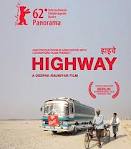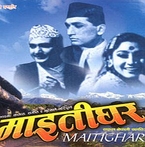History of Nepali Film Industry
Even though Nepal does not have a very long film history, the industry has its own place in the cultural heritage of the country. Most of the Nepali films use Bollywood-style songs and narrative, and are shot on 16-millimeter film. In the film industry idiom, Kathmandu, the capital and the center of the Nepali-language film industry, is called Kollywood within Nepal (different than India’s Tamil-language film industry, Kollywood, based in Chennai).
The making of Nepali films is said to have begun with D. B. Pariyar’s Satya Harishchandra, which was the first Nepali language film to be shot. It was produced from Kolkata, India, and was released on September 14, 1951. Aama was the first film produced in Nepal, and was released on October 7, 1964. It was produced by the Information Department of His Majesty’s Government of Nepal (now Government of Nepal), directed by Hira Singh Khatri with Shiva Shankar Manandhar and Bhuwan Thapa as the lead actors, who are also regarded as the first actors in the history of the Nepali film industry.
The first film to be produced under a private banner was Maitighar, which was released at the end of 1966 by Sumonanjali Films Pvt. Ltd. Although being a Nepali movie, it had many Indians contributing toward the making of the film. Mala Sinha had the lead role, along with C P Lohani. It had special appearances of Sunil Dutt and comedian Rajendra Nath. It was directed by B S Thapa and music composed by Jaidev, a veteran music maestro, it had established Indian singers like Lata Mangeshkar, Asha Bhosle, Usha Mangeshkar, and Manna Dey, doing the playback-singing along with the household names of Nepali music, like Narayan Gopal, Prem Dhoj Pradhan, C P Lohani, and Aruna Lama.
The government later established the Royal Nepal Film Corporation in 1971 which produced Mann Ko Bandh with Prakesh Thapa as the director of the film and Nati Kaji and Shiva Shankar as the music composers. Amber Gurung scored the background music. The film premiered in 1973 in Kathmandu. It was followed by Kumari (the first color Nepali film) in 1977, Sindoor in 1980, and Jeevan Rekha in series. The success of these films opened up avenue for private parties to enter into film making as industrial endeavor.
The Nepali film industry started to ruin during the Maoist revolution. Fewer films were made with low budget and even lower performance during that period which resulted in even smaller audiences. In the later years of the conflict, the production and release of Nepali films had come to a standstill with many actors and filmmakers leaving the country in search of work because there were no films being made.
 However, with Maoists coming into mainstream politics by 2006, the Nepali film industry started to develop. Now, more and more films are being made and released. The production companies and those in the industry are enthusiastic about the country’s new situation. Also the quality of the films being produced is improving, however, in comparison to Bollywood, it still lags far behind and the competition is tough with maximum youths preferring Bollywood and Hollywood to Kollyhood. Nevertheless, the production of movies like Loot, Highway, Apabad, etc. that are based on contemporary subjects, good content and presentation, the future of Nepali Film Industry looks hopeful.
However, with Maoists coming into mainstream politics by 2006, the Nepali film industry started to develop. Now, more and more films are being made and released. The production companies and those in the industry are enthusiastic about the country’s new situation. Also the quality of the films being produced is improving, however, in comparison to Bollywood, it still lags far behind and the competition is tough with maximum youths preferring Bollywood and Hollywood to Kollyhood. Nevertheless, the production of movies like Loot, Highway, Apabad, etc. that are based on contemporary subjects, good content and presentation, the future of Nepali Film Industry looks hopeful.







